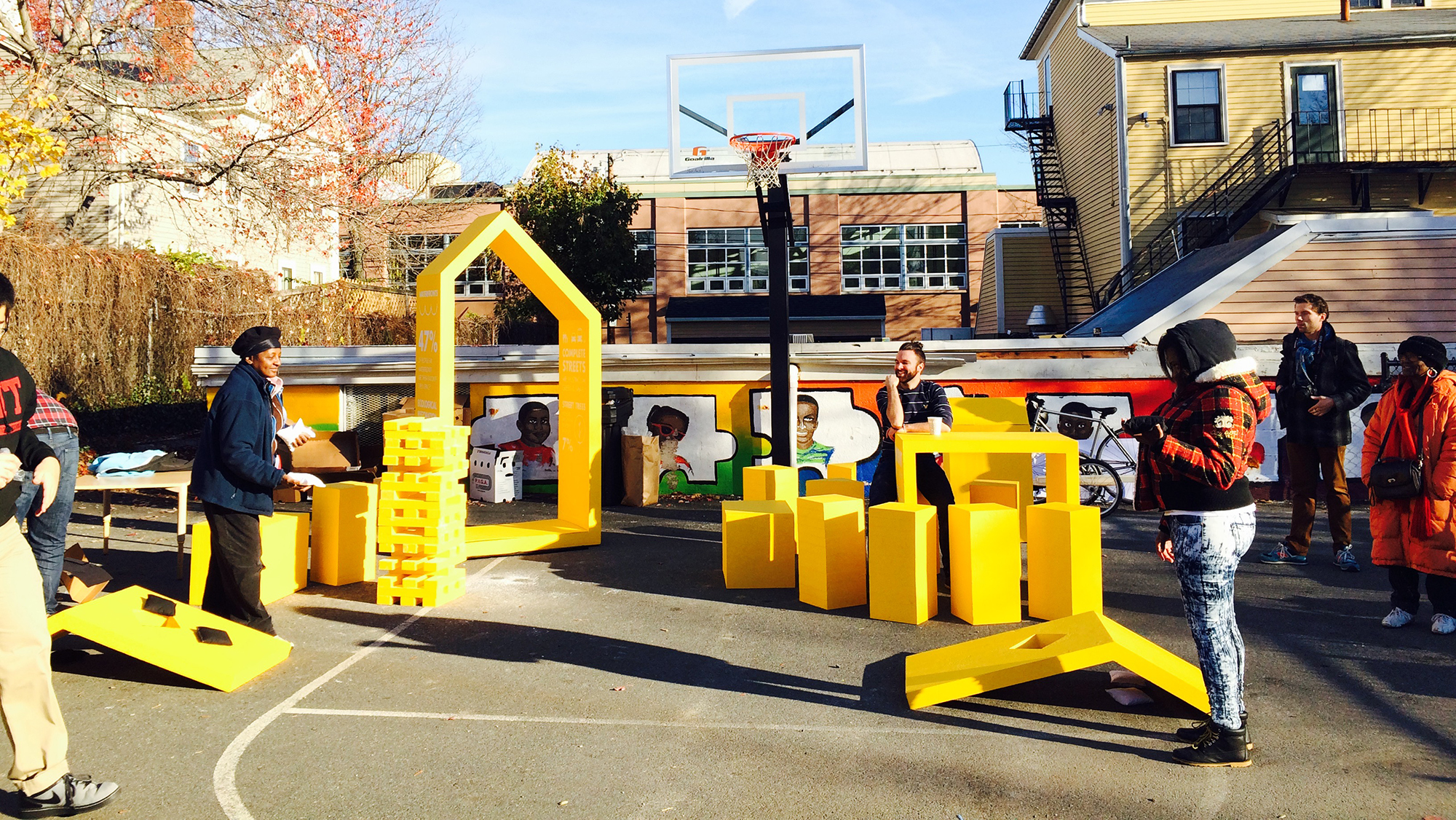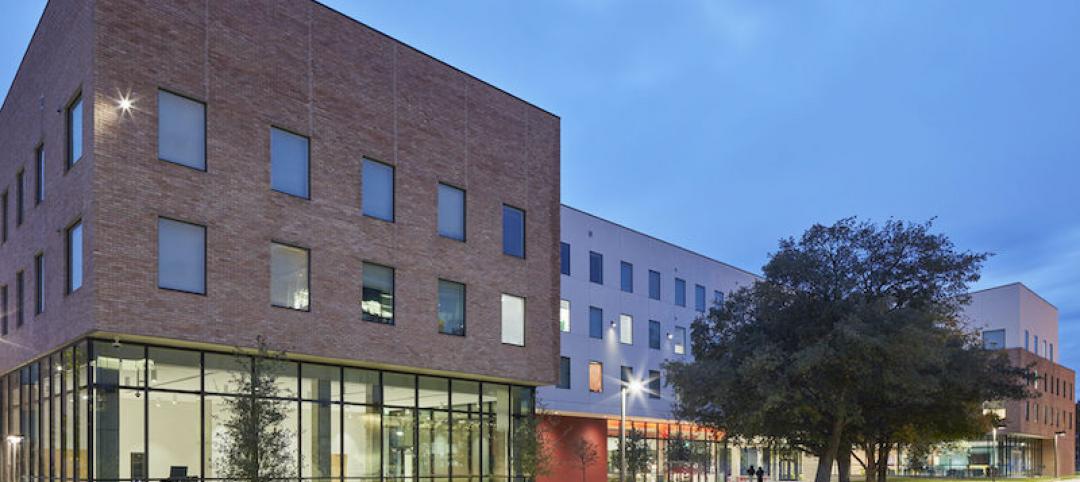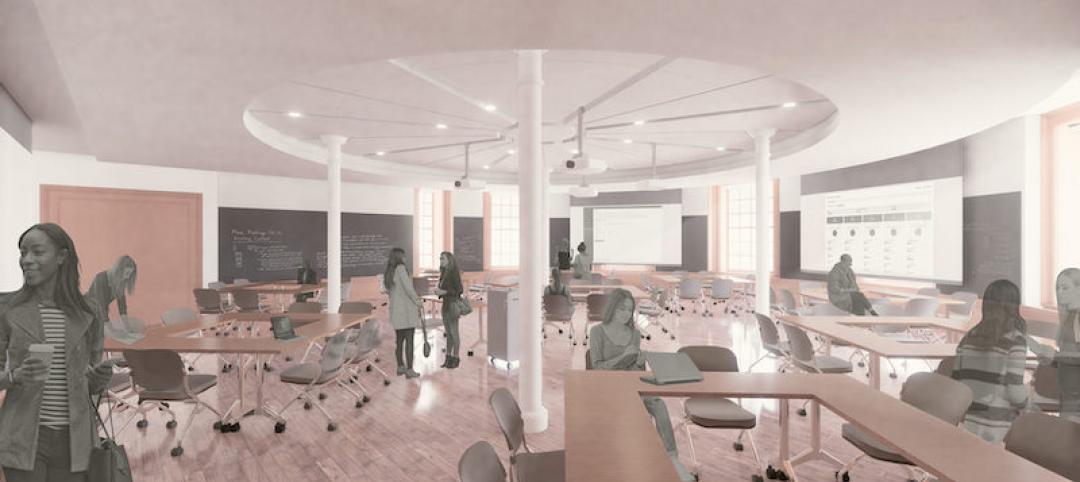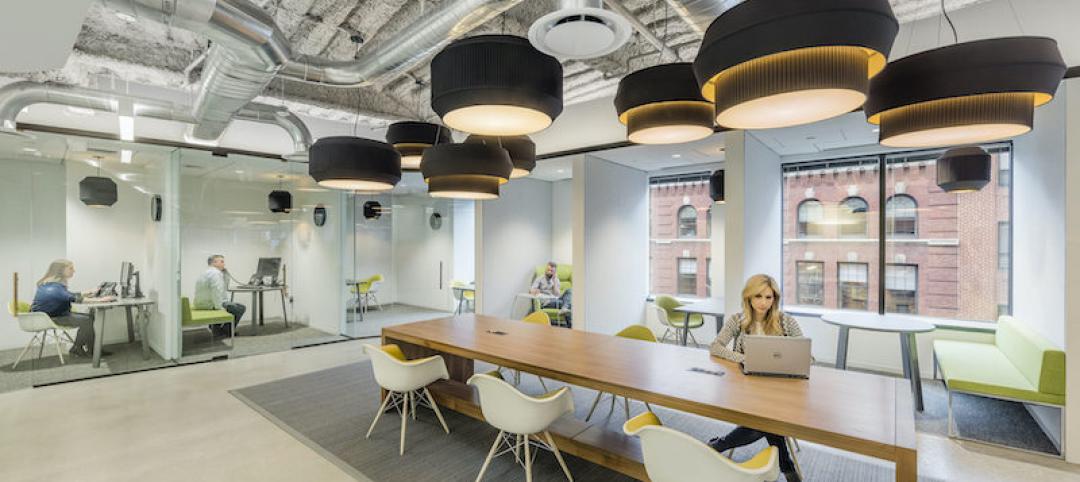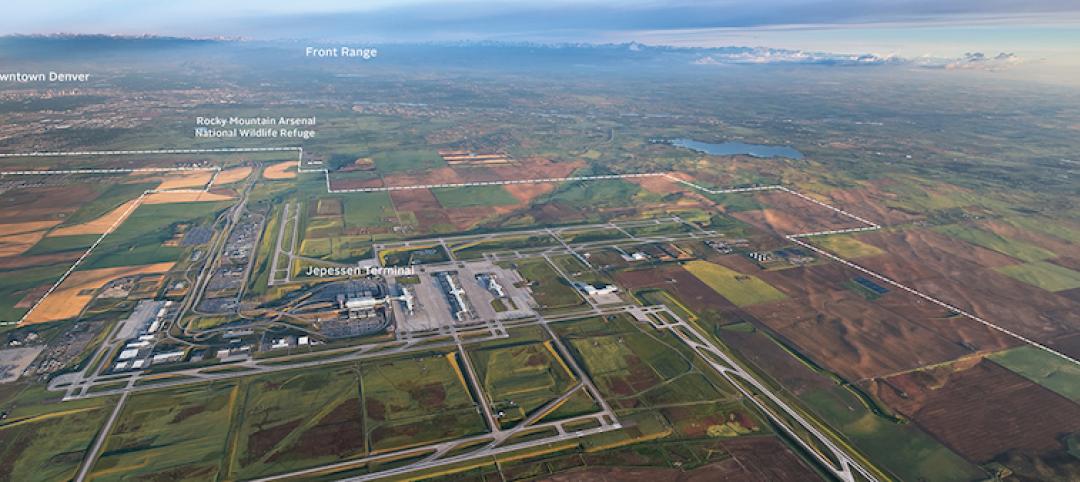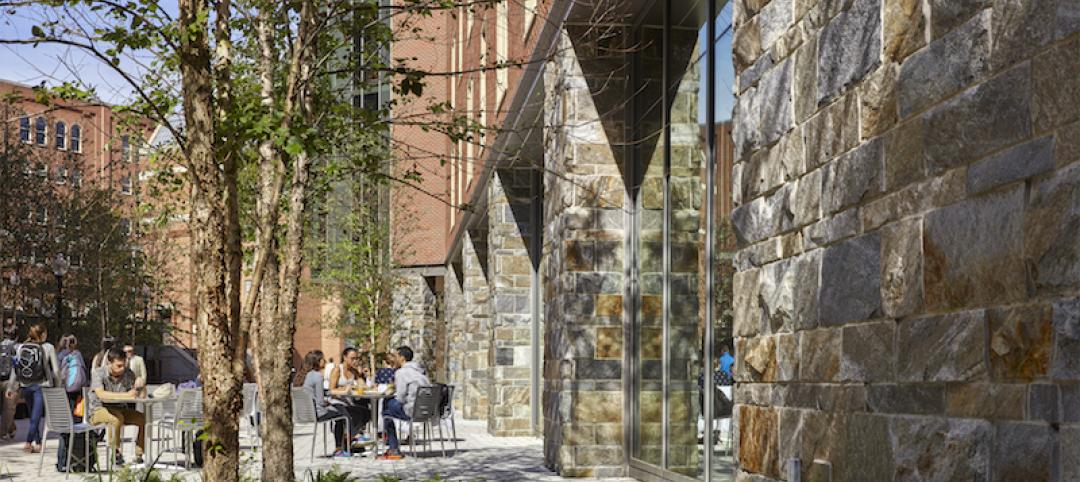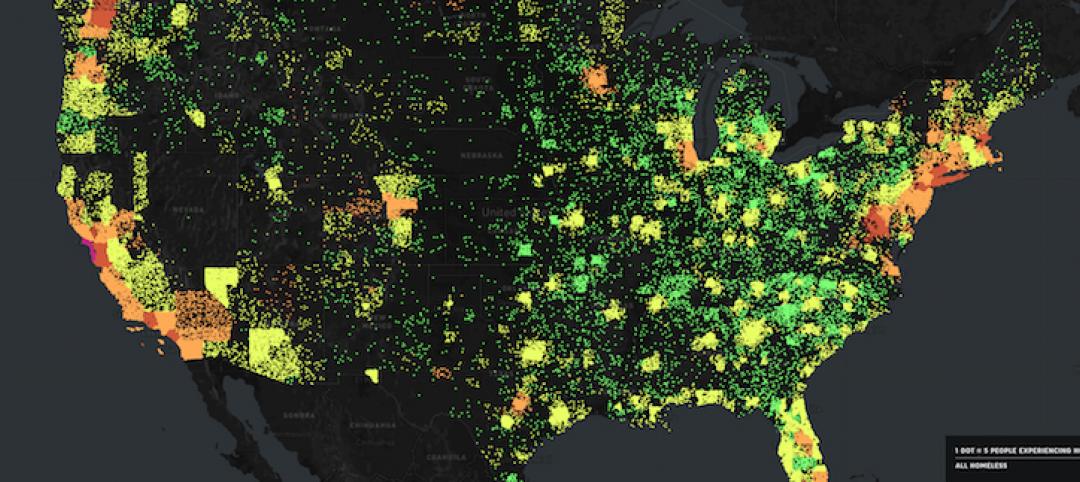We are in the midst of a public art paradigm shift. Cities are eschewing monumental public art, in the urban planning and landscape architecture context, in favor of diffuse networks of creative production. The advent of "creative placemaking," the maker movement, tactical urbanism, readily-available tools of digital production, and other cultural drivers are steadily chiseling away at the prominence of iconic public art.
What is emerging in its place is not yet fully defined. From DIY phenomena such as yarn-bombing to corporate marketing events such as Nokia's light installation with artist Deadmou5 to pop-up galleries and street performances employed by urban districts as economic development tools, we are clearly in the midst of something new.
How did we get here? Traditionally, public art has been seen as a way to mark a destination or create an instant icon. Drawing upon a monumental tradition, set in Hellenistic cities, public art often commemorates notable events or people. This tradition was revived during the Beaux-Arts era in a collusion between city-making and art-making. In its 1906 charter, the Association for Public Art in Philadelphia sets the tone for the following century. Its mission is to "promote and foster the beautiful" through "architecture, improvements, and the city plan." Or, more simply, city-making plus art-making equals public art, and, by extension, a good place.
This formula continued unchanged through contemporary urban design with public art as monument—a visible and attractive marker that municipalities, park districts, and corporations use to signal status, identity, or history.
We're not so naive as to suggest that public art was once, in some hazy past, easy to conceive or straightforward to execute, or that only now arts professionals and built environment professionals are refiguring their relationship to each other. Rather, we suggest in the following pages that the entire category of public art, as defined above, is being destabilized by emerging forms of relationships between the designed environment and creative endeavor that takes place in that environment.
The paradigm shift should not be entirely a surprise. Over the last century, the practice of landscape architecture and the practice of art has become scarcely recognizable to late Victorian proponents of beauty and order. Movements such as landscape urbanism demonstrate that the scope and ambition of the landscape architecture profession has extended into new realms. And in art, the proliferation of means and media has been so vast and unrelenting that every human activity, without exception, may be eligible for a foundation grant.
So if the well-meaning Philadelphians—and other Beaux-Arts proponents of public art—held in mind a common image when they advocated to bring beauty to landscape, today that vision is unintelligible. Rather than attempting to define what's replaced that vision, we offer some notes on the symptoms—the visible signs that tell us of the underlying shift:
From grandeur to guerrilla
Creativity in the public sphere is no longer the exclusive domain of municipalities and agencies. Increasingly, production of creativity is distributed among DIYers, community groups, and corporations in addition to traditional players such as park departments and city agencies. The spectrum of public art tacticians has diversified and spans grassroots activists self-producing events that draw attention to a particular issue, or real estate developers investing in pop-up art to signal and support initial phases of construction.
The diversification of players has been made possible, in part, by the dominance of social media as an audience engagement tool. The stronghold of traditional arts presenters has been loosened by these tools, which allow for increased and equitable information exchange. This trend has helped fuel the realm of unsanctioned art that can be promoted with little more than a Facebook event invite. From flash mobs to DIY bike lanes, social media is now enabling new, unexpected sources of creative production to connect to vast audiences.
Beyond municipal agencies and artists, corporations are now in the business of presenting creative expression in the public realm. Guerrilla marketing tools employed by commercial brands draw on the cultural capital of street artists, videographers, and performers. While the purpose behind these expressions is entirely at odds with, say, a community mural, they appear homologous to grassroots interventions. Public-private partnerships, which pair public-realm projects with private-sector patrons, are further nuancing this trend. One of the insights of the Chicago Cultural Plan (kudos to Julie Burros, whose piece appears elsewhere in these pages), was that consumers of culture are indifferent to the source of programming. As it turns out, people consume corporate-sponsored concerts in the same way that they consume non-profit theater.
From lasting to liberating
The pace of everything is quickening. Demographic trends, technological innovation, fashion and music, and even ostensibly timeless human values are obsolete the moment they are articulated. Global transit networks shorten lead times, social media expedites the consumption of information, and digital manufacturing, such as 3D printing and laser cutting, expand the possibilities of form making. Our ability to make ideas tangible, at a record pace, allows for more democratic experimentation and iteration. Amid this rush, public art no longer has to wear the patina of permanence. Now, a focus on temporary, pop-up installations is freeing new forms of expression in unlikely places. If nothing is meant to last forever, why bother trying?
Since temporary work is often seen as less risky, it can, paradoxically, take on more risk. Bolder, more adventurous and subversive art can slip through municipal regulations and public censorship when its life is short. When Philip worked on an installation that wrapped a downtown Chicago intersection entirely in color, a coalition of property owners, tenants, city officials, and art critics that may have otherwise been hostile to the project blessed it because it was presented as a three-month experiment.
But short-term can also be the harbinger of something more enduring. In urban planning, short-term action is used to test, inspire, and build momentum around a longer-term goal. With less taxpayer money at stake, communities can attract broader audiences and test before they invest. Under the guise of pilot projects, The New York City Plaza Program, spearheaded by the New York City Department of Transportation, has successfully transformed 39 acres of paved roads into public plazas. Starting first by converting underutilized lanes and blocks into temporary plazas with planters, paint, and moveable chairs, the Plaza Program proved to New Yorkers that the plazas were a value add. By initially labeling the plazas "pilot," the City was able to build political will to transform the temporary plazas into permanent pedestrian experiences. Most notably NYC DOT experimented with folding lawn chairs in Times Square in 2009. Today, Time Square is entirely pedestrianized.
The tactic of the temporary leaves room for stranger stuff and bigger gestures. Permanence can be paralyzing; temporality can be liberating.
From a solo to a symphony
Single-purpose parks that surround a monument are going the way of the bronze statue. Today, designers approach landscape architecture as a platform for, and a full participant in, diverse creative activity. By creating spaces that are flexible for future needs, public spaces can maintain cultural relevance and resilience overtime.
As Nina and Sasaki's work on the Lawn on D vividly demonstrates, the landscape itself serves as a flexible framework for experimental art and programming. As a temporary park, the Lawn on D is putting design ideas and public art to the test. The flexible-use outdoor space, adjacent to the Boston Convention and Exhibition Center, and commissioned by the MCCA, is designed as an experimental ground for programming public space. It has successfully hosted community events and programs including neon swings, dance lessons, and a even a brood of inflatable bunnies.
Both of us recognize these emerging directions in our work, and in the work of fellow practitioners. Like the sound of distant thunder, these intriguing experiments in public art tell us that there's something just beyond the horizon. Will this diffuse, undefined movement calcify into a trend, and then, like all trends must, become irrelevant? Will we see the category of public art gradually disappear as hybrid forms of city-making and art-making infuse the public imagination? Or will we, in our vainglory, continue to erect statues and obelisks that have for millennia defined city skylines?
If anything, our experience has convinced us that boundaries—professional, definitional, geographic—are ever-expanding, with art-makers and city-makers brushing up against new territories, from ecological resiliency to social activism. As the boundaries shift, the most exciting stuff is located at moments of intersection, moments of ambiguity and drift. And that's where we'll plant our stake. For now.
This piece was originally published in the Boston Society of Landscape Architects' Fall/Winter Fieldbook.
About the Authors: Philip Barash is the Creative Director and Nina Chase, ASLA, is an Associate with Sasaki Associates. More at www.sasaki.com/blog/view/674.
More from Author
Sasaki | Feb 5, 2024
Lessons learned from 70 years of building cities
As Sasaki looks back on 70 years of practice, we’re also looking to the future of cities. While we can’t predict what will be, we do know the needs of cities are as diverse as their scale, climate, economy, governance, and culture.
Sasaki | Aug 6, 2021
Microclimates and community
Creating meaningful places that contribute to a network of campus open spaces is a primary objective when we design projects for higher education.
Sasaki | Apr 12, 2021
I’ll meet you right outside: Microclimates and community
These high quality exterior gathering places are increasingly important in supporting community.
Sasaki | Feb 16, 2021
A humanistic approach to data and design in the COVID era
As the COVID crisis continues to disrupt higher education, Sasaki is working with our campus clients on space planning initiatives that harness data to uncover solutions to complex challenges never before faced by college and university leaders.
Sasaki | Jul 28, 2020
Post-pandemic workplace design will not be the same for all
Regardless of whether it takes 3 or 18 months to fully return to work, it is clear the long march toward re-emergence from this global pandemic will likely be more of a gradual re-opening than a simultaneous return to life as we knew it.
Sasaki | May 31, 2018
Denver's airport city
Cultivation of airport cities is an emerging development strategy shaped by urban planners, civic leaders, airport executives, and academics.
Sasaki | Feb 12, 2018
Stormwater as an asset on urban campuses
While there is no single silver bullet to reverse the effects of climate change, designers can help to plan ahead for handling more water in our cities by working with private and public land-holders who promote more sustainable design and development.
Sasaki | May 26, 2017
Innovations in addressing homelessness
Parks departments and designers find new approaches to ameliorate homelessness.
Sasaki | Apr 3, 2017
Capturing the waterfront draw
People seem to experience a gravitation toward the water’s edge acutely and we traverse concrete and asphalt just to gaze out over an open expanse or to dip our toes in the blue stuff.
Sasaki | Dec 14, 2016
The future of libraries
The arrival of programs that support student and faculty success such as math emporiums, writing centers, academic enrichment programs, and excellence-in-teaching centers within the library, heralds the emergence of the third generation of academic library design.

